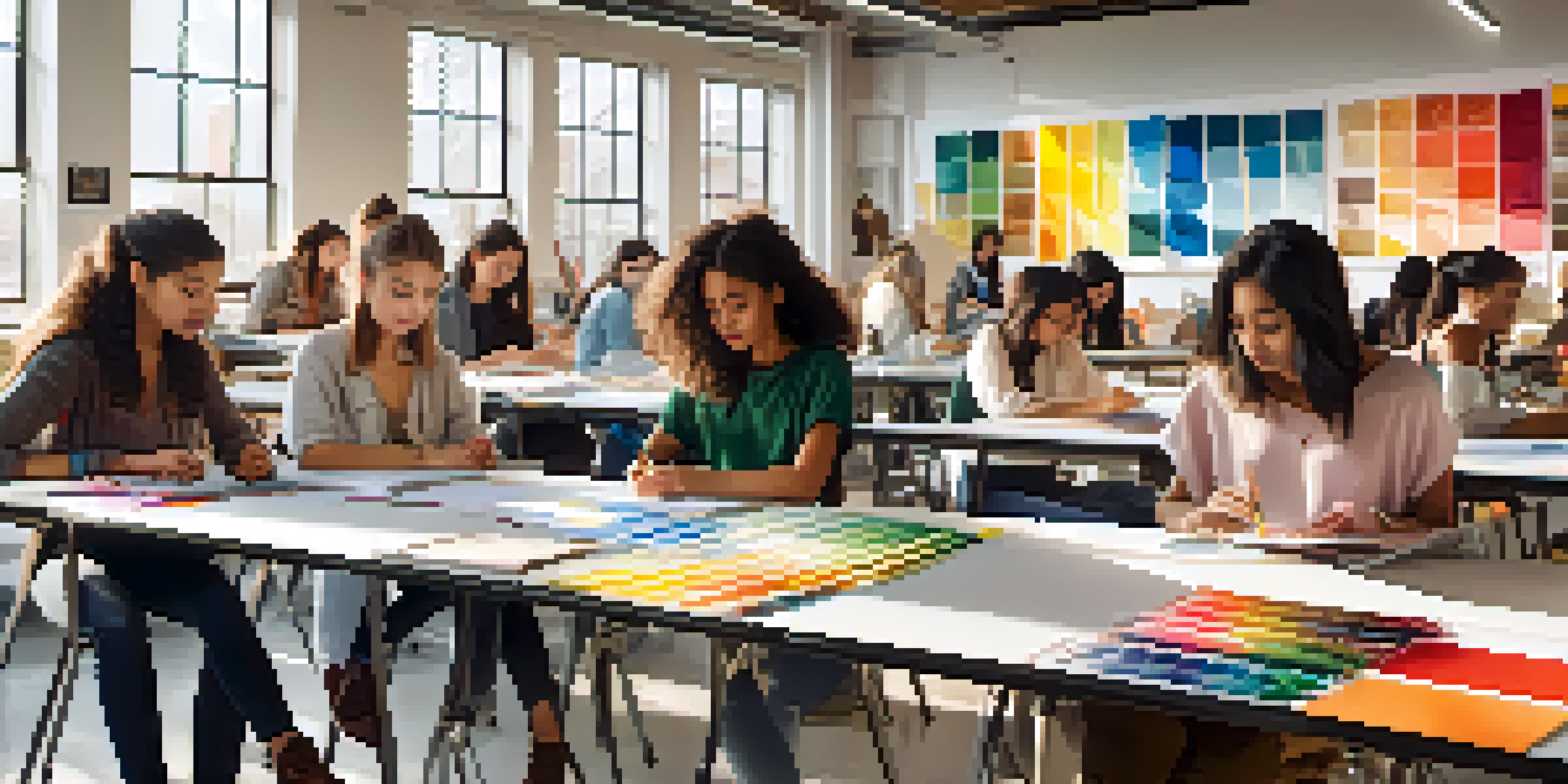Diversity in Fashion Education: Inclusive Practices and Models

Understanding Diversity in Fashion Education
Diversity in fashion education goes beyond skin color and gender; it encompasses a range of identities, backgrounds, and experiences. This inclusivity enriches the learning environment, fostering creativity and innovation. By embracing diverse perspectives, fashion schools can prepare students for a global market that values authenticity and representation.
The Importance of Inclusive Curriculum Design
An inclusive curriculum is essential in fashion education as it reflects the myriad of cultures and styles that influence the industry. By integrating diverse voices, educators can challenge the traditional narratives that often dominate fashion history. This approach not only engages students but also empowers them to explore and express their unique identities through their work.
Embrace Diversity in Education
Diversity in fashion education enriches creativity and prepares students for a global market.
Creating Accessible Learning Environments
Accessibility in fashion education means ensuring that all students, regardless of their background or abilities, can thrive. This includes physical access to facilities, as well as providing resources and support for neurodiverse learners. By fostering an environment where everyone feels welcome and valued, fashion schools can cultivate a richer educational experience.
Hiring Diverse Faculty and Staff
Diversity among faculty and staff is crucial for modeling inclusive practices in fashion education. When students see educators who reflect their own backgrounds, it fosters a sense of belonging and community. Additionally, diverse faculty can bring unique perspectives and experiences that elevate the curriculum and inspire students to think outside the box.
Inclusive Curriculum is Key
An inclusive curriculum integrates diverse voices, allowing students to express their unique identities.
Collaborating with Diverse Communities
Fashion education should not exist in a vacuum; collaboration with diverse communities is essential for relevance and growth. Partnerships with local artisans, designers, and cultural organizations can provide students with real-world insights and experiences. By engaging with the community, students can learn the importance of cultural sensitivity and ethical practices in fashion.
Utilizing Technology to Enhance Inclusivity
Technology plays a pivotal role in making fashion education more inclusive. Online platforms can offer flexible learning options for students who may face barriers in traditional settings. Furthermore, digital tools can facilitate collaboration across geographical boundaries, allowing diverse voices to contribute to the conversation and enrich the learning experience.
Technology Enhances Accessibility
Utilizing technology provides flexible learning options and fosters collaboration among diverse learners.
Assessing and Evolving Inclusive Practices
To maintain an inclusive environment, fashion education institutions must regularly assess their practices and policies. Gathering feedback from students and faculty can help identify areas for improvement and ensure that inclusivity remains a priority. As the fashion industry evolves, so too must educational approaches to keep pace with changing societal expectations.
The Future of Diversity in Fashion Education
The future of fashion education lies in its commitment to diversity and inclusion. By prioritizing equitable practices, institutions can prepare students to thrive in a dynamic and diverse industry. Ultimately, fostering an inclusive environment will lead to a more vibrant and innovative fashion landscape that truly reflects the world we live in.